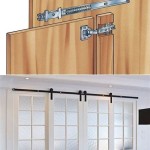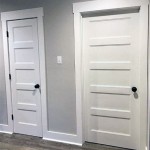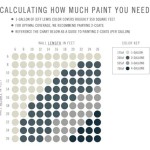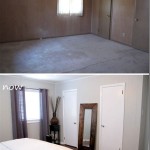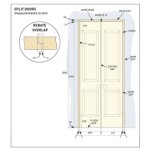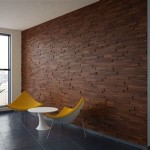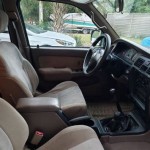Modern Restaurant Interior Design Ideas
The restaurant industry is a dynamic landscape, constantly evolving to meet changing consumer tastes and preferences. A crucial element in attracting and retaining customers is the interior design. Modern restaurant designs are moving beyond mere aesthetics. They are now focusing on creating immersive experiences, emphasizing functionality, and reflecting the restaurant's brand identity. This article explores key trends and ideas shaping modern restaurant interior design.
Emphasis on Natural Light and Biophilic Design
One of the most prominent trends in modern restaurant design is the incorporation of natural light and biophilic elements. Biophilic design seeks to connect the built environment with nature, incorporating natural materials, textures, and patterns. This approach aims to improve the overall well-being of customers and staff, creating a more relaxing and inviting atmosphere.
Maximizing natural light is achieved through large windows, skylights, and careful placement of lighting fixtures. This not only reduces energy consumption but also enhances the visual appeal of the space. The use of sheer curtains or blinds allows for control over the intensity of the light, ensuring a comfortable ambiance throughout the day.
Biophilic elements include incorporating indoor plants, living walls, and water features. Plants not only add visual interest but also help to purify the air and reduce noise levels. The selection of plants should be carefully considered, taking into account factors such as light requirements, maintenance needs, and overall aesthetic compatibility with the restaurant's design theme. Living walls, vertical gardens that integrate plants directly into the wall structure, create a dramatic focal point and contribute to a sense of tranquility. Water features, such as small fountains or cascading walls, further enhance the connection with nature, creating a soothing and relaxing environment.
The use of natural materials, such as wood, stone, and bamboo, also falls under the umbrella of biophilic design. These materials bring warmth and texture to the space, creating a more inviting and organic feel. Reclaimed wood, in particular, has become a popular choice for accent walls, furniture, and flooring, adding character and sustainability to the design.
Flexible and Adaptable Spaces
Modern restaurant design places a strong emphasis on flexibility and adaptability. Restaurants need to cater to a diverse range of needs, from intimate dinners to large group gatherings. The ability to easily reconfigure the space to accommodate different scenarios is crucial for maximizing efficiency and customer satisfaction.
Modular furniture is a key component of flexible restaurant design. This type of furniture can be easily moved and rearranged to create different seating configurations. Banquettes can be segmented into smaller units, individual tables can be joined together to accommodate larger parties, and portable partitions can be used to create private dining areas. The use of lightweight and easily stackable chairs further enhances the flexibility of the space.
Multifunctional spaces are also becoming increasingly popular. A single area can be designed to serve multiple purposes, such as a bar area that can also be used for private events, or a waiting area that can be converted into a lounge during off-peak hours. This requires careful planning and consideration of the different activities that will take place in the space, as well as the necessary equipment and furnishings.
Technology also plays a role in creating flexible and adaptable spaces. Smart lighting systems allow for the adjustment of lighting levels and color temperature to create different moods and atmospheres. Sound systems can be zoned to provide different audio experiences in different areas of the restaurant. Reservation systems and table management software can help to optimize seating arrangements and minimize wait times.
Sustainability and Eco-Conscious Design
Sustainability is no longer just a buzzword; it is a core value for many consumers and businesses. Modern restaurant design reflects this shift towards environmental responsibility, incorporating sustainable materials, energy-efficient technologies, and eco-conscious practices.
The use of sustainable materials is a key aspect of eco-conscious design. This includes using recycled and reclaimed materials, as well as materials that are sourced from sustainably managed forests. Bamboo, cork, and linoleum are examples of eco-friendly flooring options. Recycled glass can be used for countertops and backsplashes. Reclaimed wood can be used for furniture and accent walls.
Energy-efficient lighting is another important consideration. LED lighting is significantly more energy-efficient than traditional incandescent lighting, and it also has a longer lifespan. Smart lighting controls can further reduce energy consumption by automatically dimming or turning off lights when they are not needed. Natural light, as discussed earlier, also plays a role in reducing reliance on artificial lighting.
Water conservation is also an important aspect of sustainable restaurant design. Low-flow faucets and toilets can significantly reduce water consumption. Water-efficient dishwashers and ice machines can also help to conserve water. The implementation of water-wise landscaping practices, such as using drought-tolerant plants and efficient irrigation systems, can further reduce water consumption.
Beyond materials and technology, sustainable restaurant design also encompasses operational practices. Waste reduction and recycling programs are essential for minimizing the environmental impact of the restaurant. Composting food waste can further reduce the amount of waste sent to landfills. Sourcing locally and seasonally available ingredients can reduce transportation costs and support local farmers.
Integrating Technology Seamlessly
Technology is an integral part of the modern dining experience, and its integration into the restaurant's interior design should be seamless and intuitive. From online ordering systems to interactive menus, technology can enhance the customer experience and streamline operations.
Interactive menus are becoming increasingly popular, allowing customers to browse the menu, view images of dishes, and place orders directly from their smartphones or tablets. These menus can also provide information about ingredients, allergens, and nutritional values. The use of QR codes allows customers to access the menu and place orders without having to download an app.
Online ordering systems streamline the takeout and delivery process. Customers can place orders online or through a mobile app, and the restaurant can track orders and manage deliveries efficiently. Designated pickup areas can be incorporated into the restaurant's design to facilitate quick and easy order fulfillment.
Digital signage can be used to display menus, promotions, and other information. These signs can be easily updated and customized, allowing the restaurant to communicate with customers effectively. Digital signage can also be used to create a more engaging and interactive experience, such as displaying live cooking demonstrations or customer testimonials.
Point-of-sale (POS) systems streamline the payment process and provide valuable data about sales trends and customer preferences. Wireless payment terminals allow servers to process payments quickly and easily at the table. Customer relationship management (CRM) systems can be used to track customer loyalty and personalize marketing efforts.
Creating a Unique Brand Identity
The interior design of a restaurant should reflect its brand identity and create a cohesive and memorable experience for customers. The design should communicate the restaurant's values, personality, and target audience. This involves careful consideration of color palettes, materials, furniture, lighting, and artwork.
Color palettes play a crucial role in shaping the mood and atmosphere of the restaurant. Warm colors, such as reds and oranges, can create a sense of energy and excitement, while cool colors, such as blues and greens, can create a more relaxing and calming atmosphere. The choice of colors should be consistent with the restaurant's brand and target audience.
Furniture and fixtures should be selected to complement the overall design theme. The style, materials, and finishes of the furniture should be consistent with the restaurant's brand identity. Comfortable and ergonomic seating is essential for creating a positive dining experience.
Lighting plays a critical role in setting the mood and highlighting key features of the restaurant. Ambient lighting provides overall illumination, while task lighting illuminates specific areas, such as tables and workstations. Accent lighting is used to highlight artwork and architectural features. The lighting should be carefully planned to create a welcoming and inviting atmosphere.
Artwork and decor can be used to add personality and visual interest to the restaurant. The choice of artwork should be consistent with the restaurant's brand and target audience. Local artists can be featured to support the community and add a unique touch. The use of plants and other natural elements can further enhance the visual appeal of the space.
In conclusion, modern restaurant interior design is a complex and multifaceted discipline that requires careful consideration of various factors, including functionality, aesthetics, sustainability, and technology. By embracing the trends and ideas discussed in this article, restaurants can create spaces that are both visually appealing and functionally efficient, enhancing the dining experience and attracting and retaining customers. A successful modern restaurant interior design will not only reflect the restaurant's brand identity but also contribute to its overall success.
21 Restaurant Interior Design Ideas For 2024 Touchbistro

21 Restaurant Interior Design Ideas For 2024 Touchbistro

8 Stunning Ideas For Classic Modern Restaurants Interior Design Inspiration Brabbu Forces

Inspiring Modern Restaurant Interior Projects By Beleco Design

Cafe Interior Design Ideas Low Cost Restaurant Decor Foodiv

Small Restaurant Design 10 Styles For Brides
21 Restaurant Interior Design Ideas For 2024 Touchbistro

Top 10 Modern Interior Design Restaurants By Avroko

75 Best Restaurant Design Pictures Ideas Mortarr

Restaurant Interiors Softzone
Related Posts

